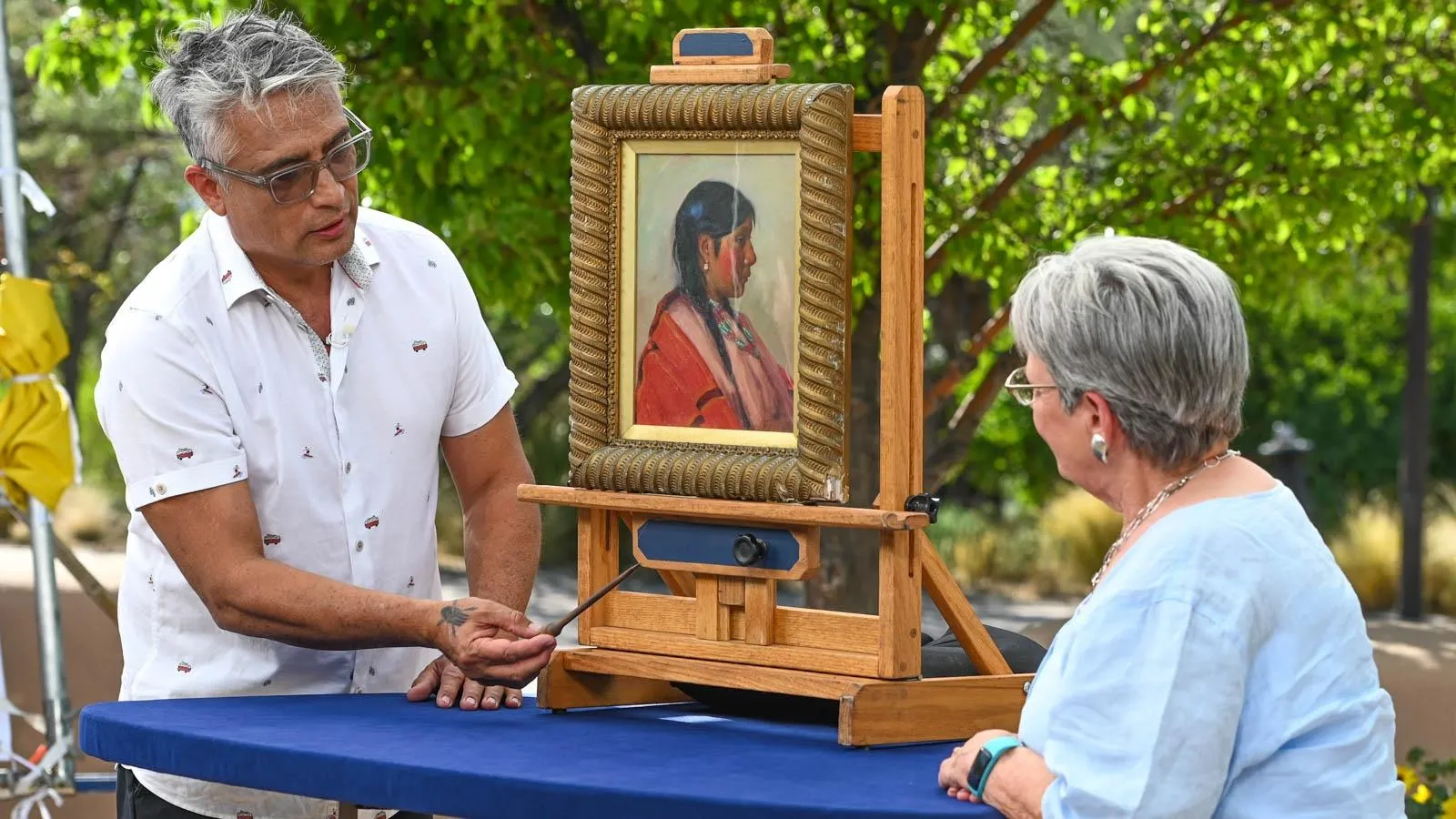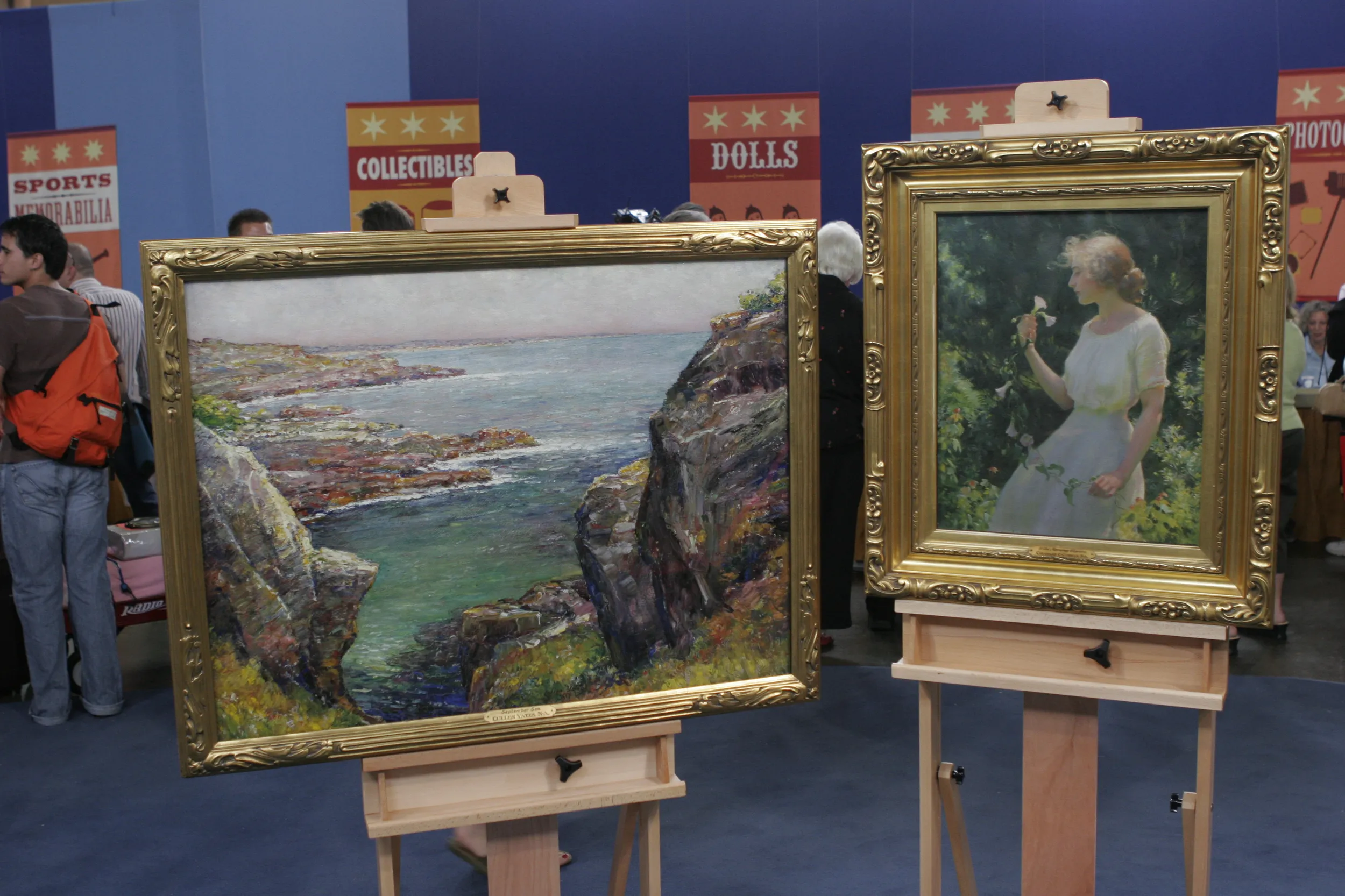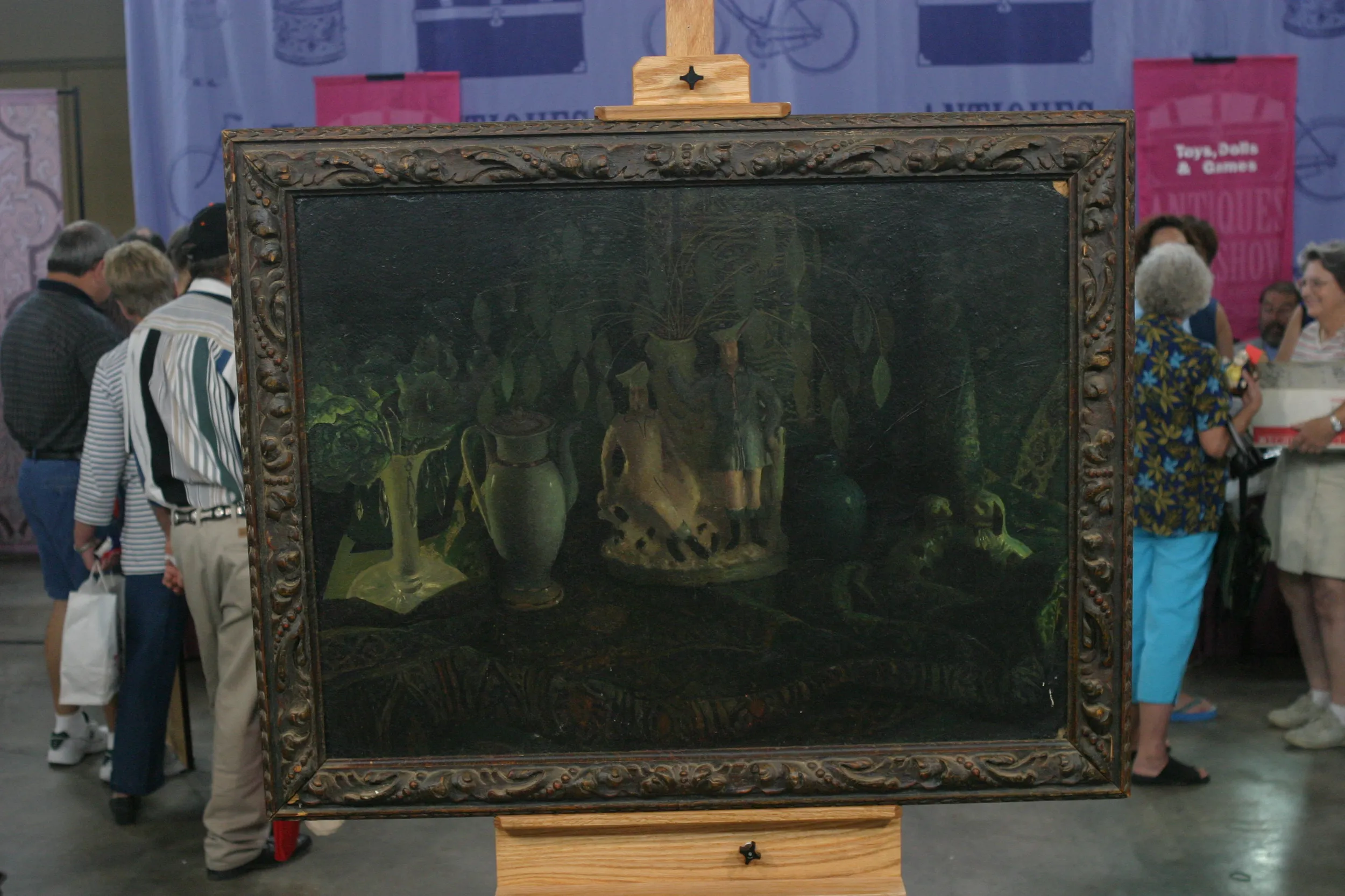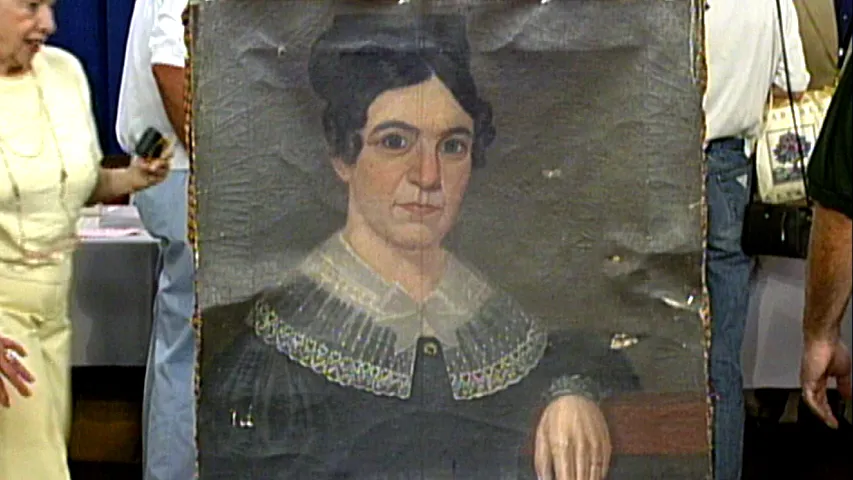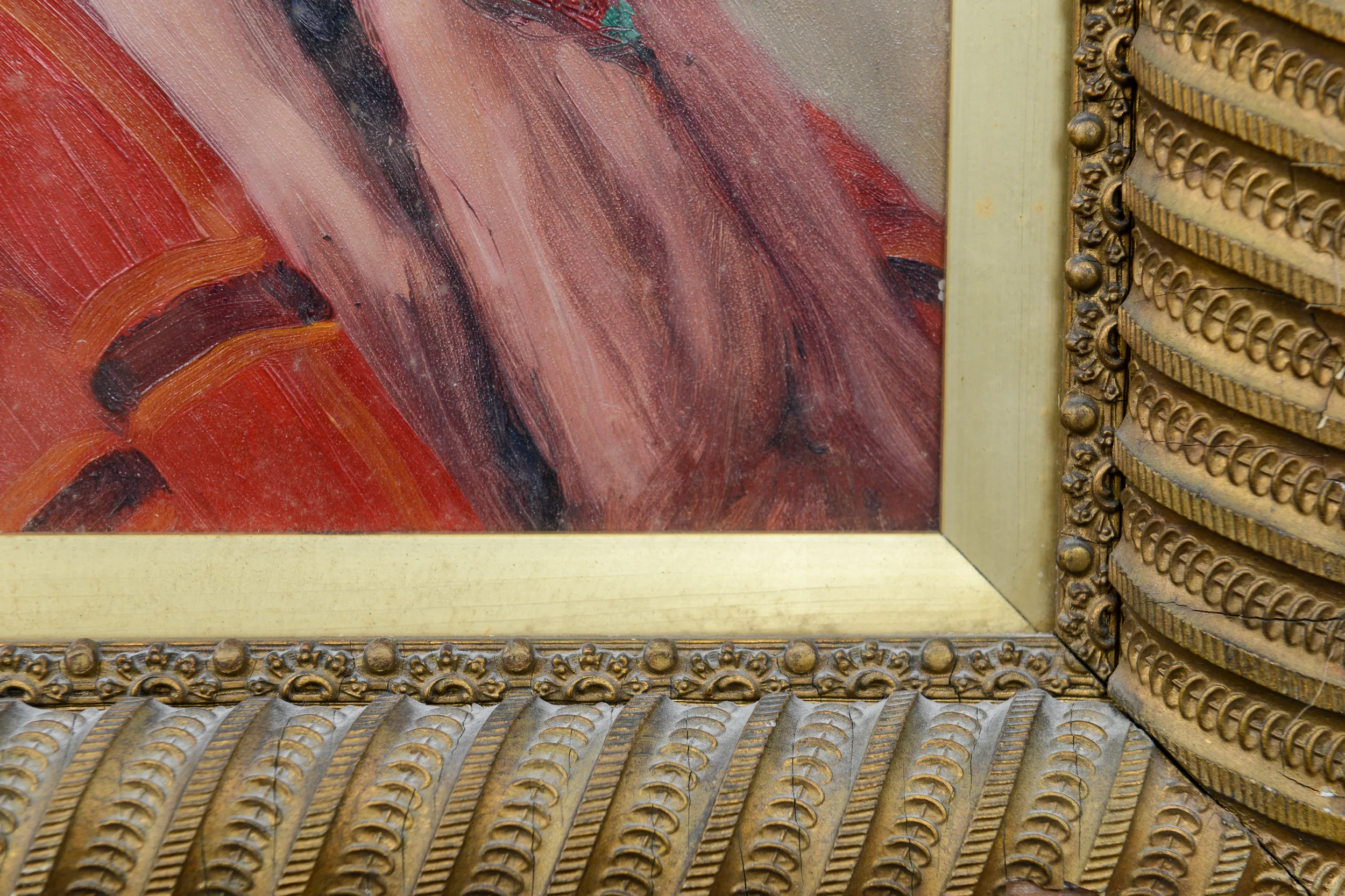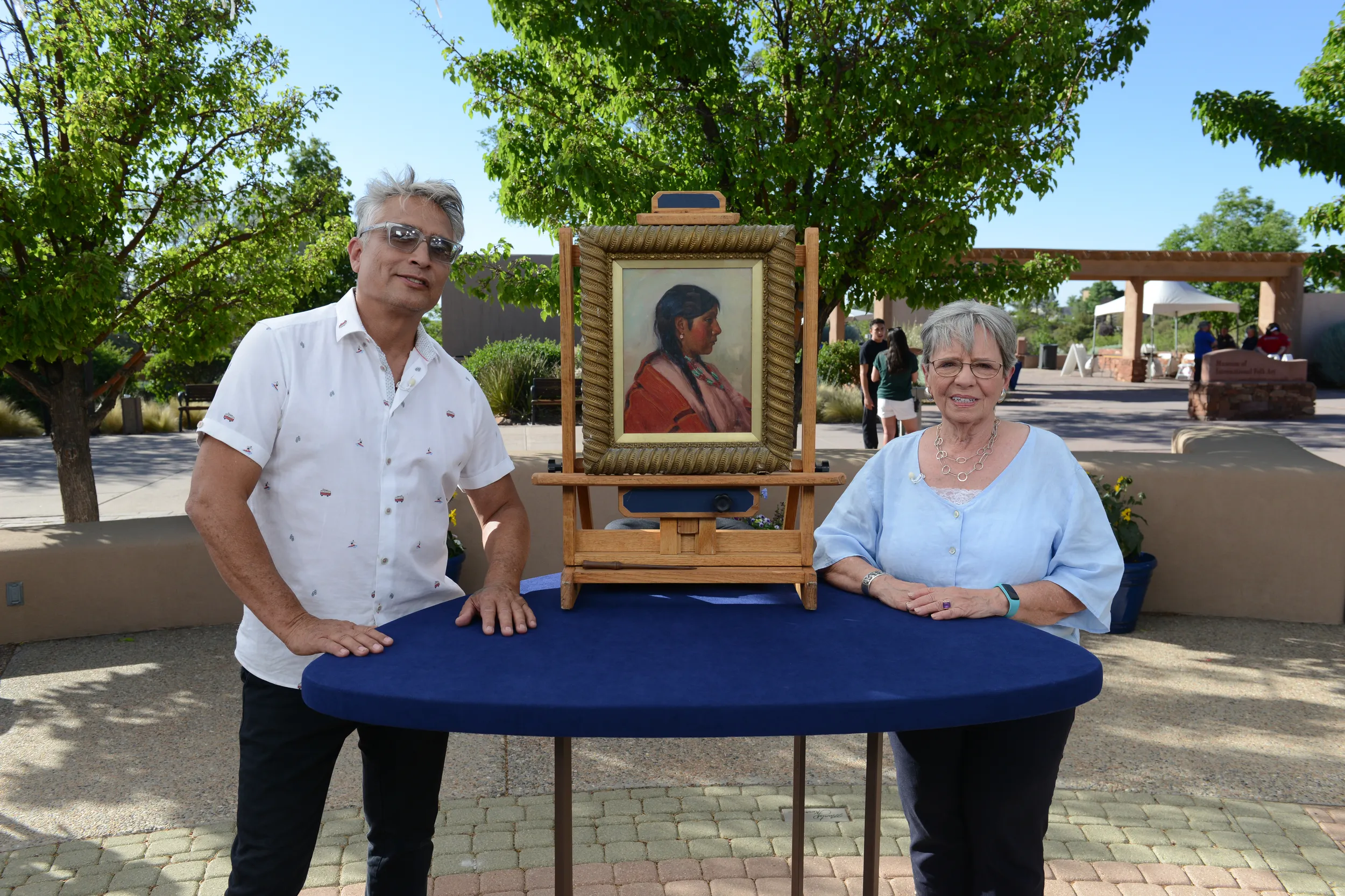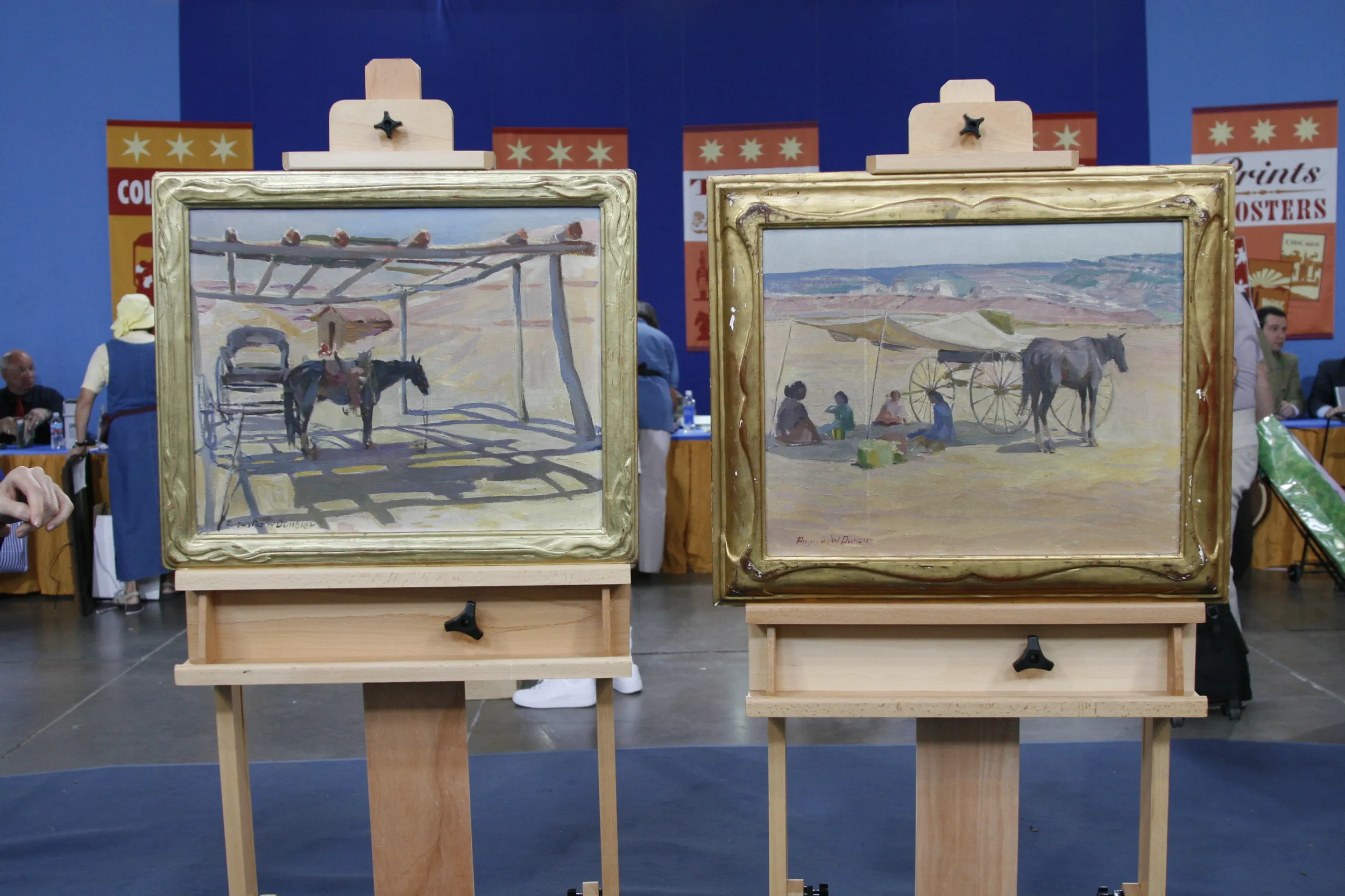GUEST: I have a painting that was in the Carnegie mansion in New York City. My father-in-law worked as a boilerman for the Carnegie family while Mrs. Carnegie was still alive, but Mr. Carnegie had already passed. And when she died, her daughter Mrs. Miller chose to get rid of certain things that she did not want. So they put small prices on everything, hoping that the employees of the building could purchase them, not knowing that they were going to be gifted.
APPRAISER: Wow.
GUEST: So everybody picked some moderate things to, to take, and then at the end, they didn't have to pay for it, and this is one of them. And it was in my in-laws' house since 1946, which is the year my husband was born. And he remembers it being in the house all those years and, and loved it.
APPRAISER: Do you know anything about the artist?
GUEST: I don't.
APPRAISER: Or do you have any idea about the, the subject matter?
GUEST: No, I moved about two years ago, and it's been in storage in the house, and I had forgotten to really look at it, and was surprised that it was a woman and not a man, because that was my memory of it.
APPRAISER: I actually looked at the back, on the verso, to see if there was any information. But it's still, as you see, it's in its original frame. And it has paper on the verso.
GUEST: It's all sealed.
APPRAISER: And so it's never been opened up. So it would be hard to discern if there were more information about the work of art.
GUEST: Correct.
APPRAISER: The subject is a Native American girl, and it is probably a Taos Indian girl. This painting was probably painted in about 1900. The painting itself is on board.
GUEST: Mm-hmm.
APPRAISER: It's an oil painting, and it was probably done with the model. The model would pose for the artist in Taos. There were so many artists coming from all over the country, really good painters coming to paint the Southwest. And there was a Taos art colony there. You don't have a signature or anything on the painting.
GUEST: We're not aware of the signature unless it's hidden behind that frame.
APPRAISER: When I first saw it, I knew exactly who painted it.
GUEST: You did-- that's amazing.
APPRAISER: And so all I had to do was look behind the dust in this area in here.
GUEST: You can see it.
APPRAISER: "J.H. Sharp."
GUEST: (gasps)
APPRAISER: Joseph Henry Sharp, who was a very important American painter, but more so, a really important Taos painter.
GUEST: Mm-hmm.
APPRAISER: He actually came from Ohio. He was born in 1859, and then he died much later, in 1953. Joseph Henry Sharp was just a master of capturing still lifes, but also his subject matter.
GUEST: Mm-hmm.
APPRAISER: He painted almost exclusively in Taos, Taos Pueblo Indian people. So these are real people. It's a real portrait. The fact that it's never been opened, it's never been cleaned, it is as fresh as you can get a painting. It's in A-plus great condition. If it were to be in a retail gallery situation, this painting would bring between $50,000 and $70,000.
GUEST: (gasps) (voice breaking): I can't believe it. (sniffles): That's amazing.
APPRAISER: It's really wonderful.
GUEST: Just amazing.
APPRAISER: I... Look at this. You know, I, I get these...
GUEST: I wasn't ex...
APPRAISER: ...you know, goose pimples, thinking about, like, this is not... You didn't know that it was there, and... It, it's just a wonderful, great painting.
GUEST: Thank you so much, thank you so much. It's wonderful news. This is so unbelievable.
APPRAISER: Yeah.

